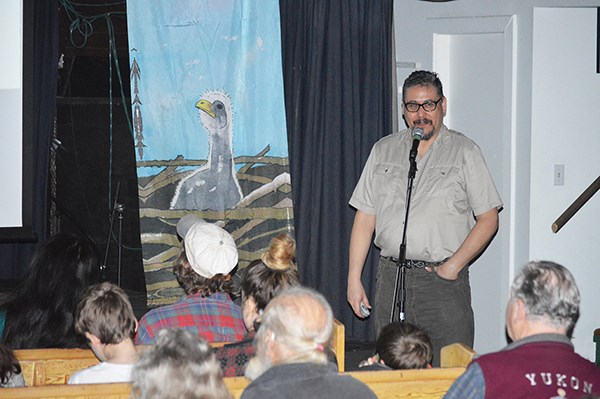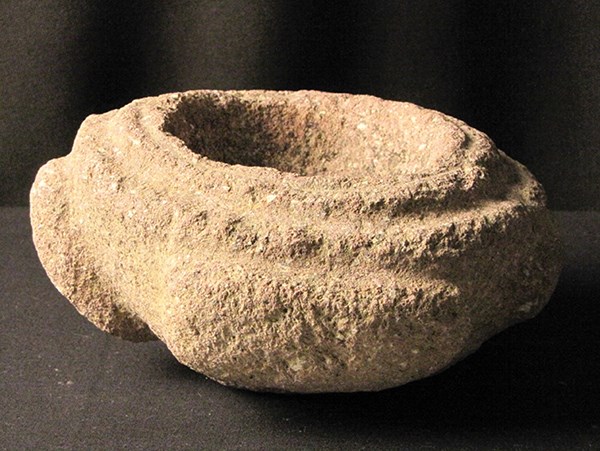An ancient First Nations bowl found a few years ago has been attracting some attention from the academic world.
Rudy Reimer, an indigenous archaeologist who teaches at Simon Fraser University, has been working on an article about the bowl, and earlier this year, he spoke about the project at the Brackendale Art Gallery. “It’s been a few years since the bowl was actually found,” he said.
The bowl turned up in 2012 after geoscientist Pierre Friele was working with a graduate student along the bank of the �鶹�����River when the water was low. “He noticed a distinct feature in the cutback,” Reimer said. “They went and investigated, and out popped the bowl. It’s a very fortunate thing.”
Reimer has written about the discovery for The Journal of Northwest Anthropology, and the article has been accepted for publication. It also formed the basis of a recent talk he gave locally about the types of bowls and other archaeological discoveries in the region.
Items like the bowl can turn up in places such as yards, but it is rare for one to be found in its original context, which was probably a type of fire pit.
In addition to the bowl, a couple of pestles were found.
The researchers used carbon dating of nearby organic material to determine the age of the bowl, specifically charcoal samples. The carbon dating process put the age of the bowl at more than 1,600 years old.
The researchers took samples of the fire pit as well as food and plant remains to try and decipher what people were doing at the site.
They also found stone flakes, probably from a cutting implement, which suggests the First Nations people living there could have been making nets for catching fish.
“That place was historically known as a very good fishing spot,” Reimer said.
The researchers compared the bowl with others found in the area.

It appears it was not a finished product, at least by looking at its design, which depicts a creature with a flat face, probably some kind of owl. “It was probably going to become a bird,” he said. “Culturally, for the Squamish, owls are very important.”
He also thinks the bowl had come kind of ceremonial purpose, “probably used in ceremonies like the first salmon ceremony.”
The research also helped give an idea of how the course of the river has changed over time, Reimer adds – specifically, how channels meandered back and forth and how some areas were flooded and covered over the past approximately 1,500 years.
A �鶹�����Nation member, Reimer was always interested in the landscape and his indigenous ancestry.
“Growing up in Squamish, I was always interested in geology,” he said. He later switched to archaeology and did consulting work before starting at SFU. On his university biography pages, he lists his research, teaching and publishing areas as both archaeology and First Nations studies. “In the future,” he stated, “my archaeological research will continue to combine many forms of cultural knowledge – oral histories/traditions, language, place names and cultural practices, with archaeological data.”



